- Clone
- Poly19056 (See other available formats)
- Regulatory Status
- RUO
- Other Names
- Keratin, type II cytoskeletal 1, K1, CK-1, keratin 86, cytokeratin-1, 67 kD cytokeratin, type-II keratin Kb1, keratin complex 2, basic, gene 1
- Previously
-
Covance Catalog# PRB-165P
- Isotype
- Rabbit Polyclonal IgG
- Ave. Rating
- Submit a Review
- Product Citations
- publications
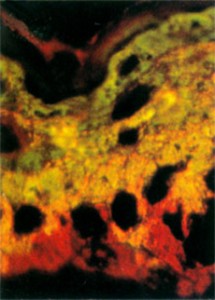
-

Double-label immunofluorescence analysis of developing mouse epidermis showing E18 epidermis reacting with Texas Red-labled antibody to K14, which stains the periderm, and fluorescein isothiocyanate-labeled antibody to K1 (Poly19056), which stains the upper layers of the epidermis, but not the periderm. Areas containing epitopes recognized by both K14 and the other antibody stain yellow or orange. Photo courtesy of DR Roop, Baylor College of Medicine. Reproduced from JR Bickenbach, JM Greer, DS Bundman, JA Rothangel, DR Roop. Loricrin expression is coordinated with other epidermal proteins and the appearance of lipid lamellar granules in development. J Invest Derm 10(3):405-410, 1995. Reprinted by permission of Blackwell Science Inc. -

Total lysates (15 µg protein) from Mouse skin (Positive control) and Raw264.7 (Low expression negative control) were resolved by electrophoresis (4-20% Tris-glycine gel), transferred to nitrocellulose, and probed with 1:1000 (1 µg/ml) purified Keratin 1 antibody, clone Poly19056. Proteins were visualized using chemiluminescence detection by incubation with HRP Donkey anti-Rabbit secondary antibody (Cat. No. 406401, 1:3000 dilution). Direct-Blot™ HRP anti-β-actin was used as a loading control (Cat. No. 643807, 1:8000 dilution). -

IHC staining of purified anti-Keratin 1 antibody (Poly19056) on formalin-fixed paraffin-embedded rat skin tissue. Following antigen retrieval using Citrate (Cat. No. 420901), the tissue was incubated with 1.0 µg/mL of the primary antibody 60 minutes at room temperature. BioLegend’s Ultra Streptavidin (USA) HRP Detection Kit (Multi-Species, AEC, Cat. No. 929501) was used for detection followed by hemotoxylin counterstaining, according to the protocol provided. The image was captured with a 20X objective.
| Cat # | Size | Price | Quantity Check Availability | Save | ||
|---|---|---|---|---|---|---|
| 905602 | 25 µL | 72€ | ||||
| 905601 | 100 µL | 231€ | ||||
Keratin 1 belongs to the keratin family of proteins which are fibrous structural proteins. It is a type II cytokeratin that forms the major cytoskeleton in suprabasal keratinocytes along with heterodimer type I partner KRT10 form. KRT1 and KRT10 mutations lead to congenital epidermolytic ichthyosis characterized by skin erosions and hyperkeratosis.
Product DetailsProduct Details
- Verified Reactivity
- Mouse, Rat
- Antibody Type
- Polyclonal
- Host Species
- Rabbit
- Immunogen
- This monospecific polyclonal antibody was raised against a peptide sequence derived from the C-terminus of the mouse keratin 1 protein.
- Formulation
- Phosphate-buffered solution + 0.03% Thimerosal.
- Preparation
- The antibody was purified by affinity chromatography.
- Concentration
- 1.0 mg/mL
- Storage & Handling
- The antibody solution should be stored undiluted between 2°C and 8°C. Please note the storage condition for this antibody has been changed from -20°C to between 2°C and 8°C. You can also check your vial or your CoA to find the most accurate storage condition for this antibody.
- Application
-
IHC-P - Quality tested
WB, ICC - Verified - Recommended Usage
-
Each lot of this antibody is quality control tested by formalin-fixed paraffin-embedded immunohistochemical staining. For immunohistochemistry, a dilution of 1:500 is suggested. For Western blotting, the suggested use of this reagent is 1.0 µg per mL (1:1000 dilution). For immunocytochemistry, a dilution of 1:500 is recommended. It is recommended that the reagent be titrated for optimal performance for each application.
- Application Notes
-
This antibody is effective in immunoblotting (WB), immunofluorescence (IF) and immunohistochemistry (IHC). This antibody has been successfully used in both frozen and paraffin embedded tissues.
*Predicted MW = 67 kD
This product may contain other non-IgG subtypes. - Application References
-
- Croyle MJ, et al. 2011. Development 138: 1675. (IHC, IF) PubMed
- Wirt SE, et al. 2010. J. Cell Biol. 191: 809. (IHC) PubMed
- Hu Y, et al. 2001. Nature. 410:710.
- Yuspa SH, et al. 1989. J Cell Biol. 109:1207.
- Roop DR, et al. 1984. J Biol Chem. 259:8037.
- Mailleux AA, et al. 2007. Dec Cell. 12:221. (IHC)
- IShitsuka Y, et al. 2013. J Invest Dermatol. 133:2566. (WB)
- Sengupta A, et al. 2010. PLoS One. 5:12249. (IHC) PubMed
- Suzuki K, et al. 2009. Development. 136:367. (IHC) PubMed
- Levy V, et al. 2007. FASEB J. 21:1358. (IHC) PubMed
- Osakarsson T, et al. 2006. Genes Dev. 20:2024. (IHC) PubMed
- Liang Y. 2011. Patholog Res Int. 2011:93674. (IHC) PubMed
- Sachs N, et al. 2012. PNAS. 109:21468. (IF)
- Vidal VP, et al. 2005. Curr Biol. 15:1340. (IHC)
- Product Citations
-
- RRID
-
AB_2801250 (BioLegend Cat. No. 905602)
AB_2565051 (BioLegend Cat. No. 905601)
Antigen Details
- Biology Area
- Cell Biology, Neuroscience, Neuroscience Cell Markers
- Molecular Family
- Intermediate Filaments
- Gene ID
- 16678 View all products for this Gene ID
- UniProt
- View information about Keratin 1 on UniProt.org
Related Pages & Pathways
Pages
Related FAQs
Other Formats
View All Keratin 1 Reagents Request Custom Conjugation| Description | Clone | Applications |
|---|---|---|
| Purified anti-Keratin 1 | Poly19056 | IHC-P,WB,ICC |
Customers Also Purchased
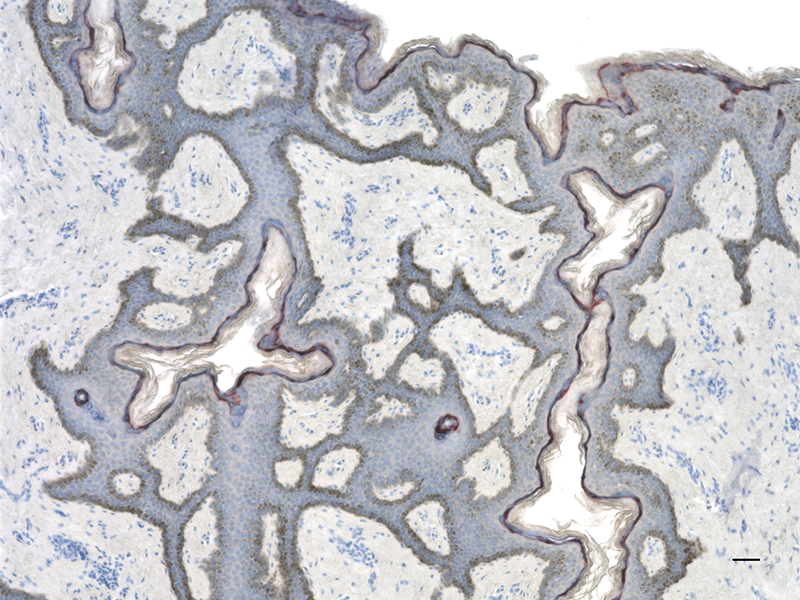
Compare Data Across All Formats
This data display is provided for general comparisons between formats.
Your actual data may vary due to variations in samples, target cells, instruments and their settings, staining conditions, and other factors.
If you need assistance with selecting the best format contact our expert technical support team.
 Login / Register
Login / Register 




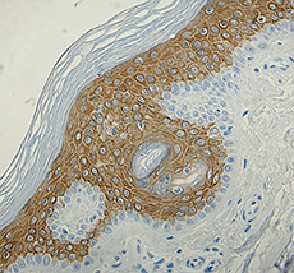
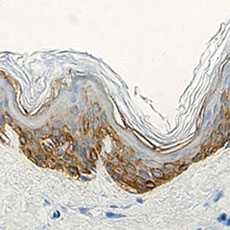

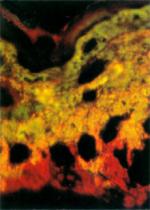

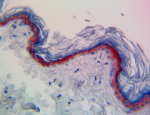



Follow Us